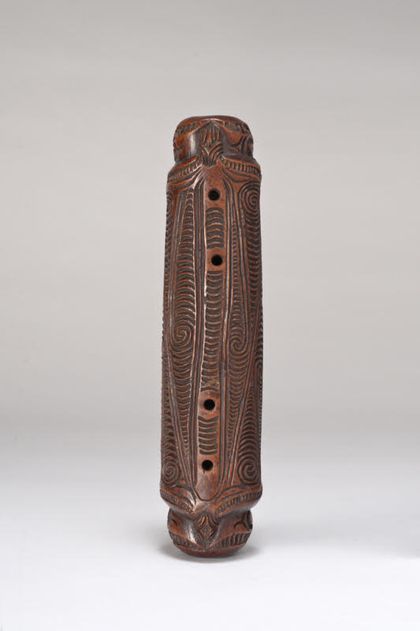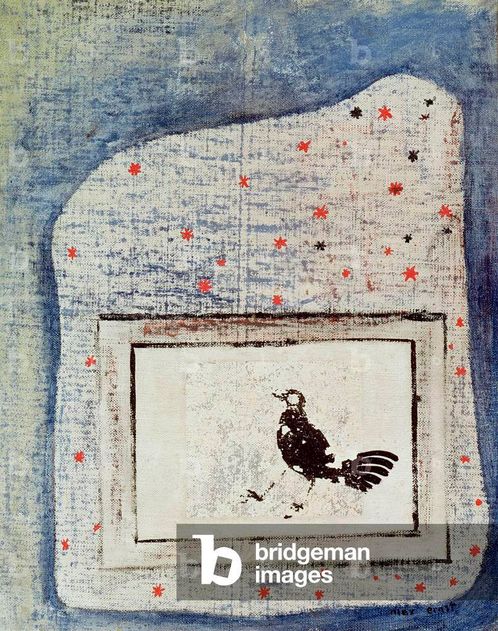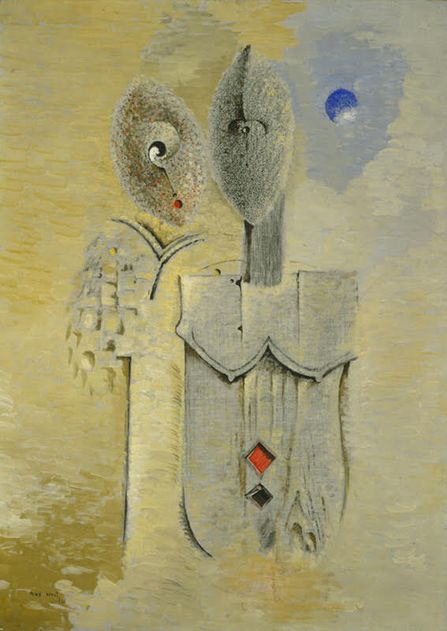- Sections :
- Crime & Public Safety
- Restaurants & Food
- Sports
- More
Houston's Menil Collection: Fascinating ... and Free
HOUSTON, TX -- I haven’t been to the Menil Collection, located in Montrose, Houston, since my undergraduate days after returning from my war. It’s a wonderful place dedicated to the people, where an average person can go and relax their mind appreciating the beauty offered. Be not afraid to take in the visiting and permanent exhibitions trying to interpret the artist's intentions. The brilliance of John and Dominique de Menil to establish their foundation in the mid-1950’s, was to bring about an understanding of art, and its appreciation. But not only that, the Menil’s wanted to foster an awareness of architecture, culture, religion, and philosophy; which all came into fruition in the late 1980’s when the main building on the campus opened to the public. John died in 1973, but Dominique stayed true to their plans of the foundation to bring their collection to the people in 1987. The great lady herself passed away ten years later.
I remember my Menil visit in the 1990’s, the result of an art appreciation assignment where students were to write on a piece that essentially moved us. I came across a funerary stele of a young Egyptian woman from an influential family, who had died in the 6th or 7th century, and have kept it in mind ever since. What was different about this stele were the soft lines that were offered, and the figure was rather attractive, despite its being carved on limestone. I put myself in the eyes of the mason as he meticulously carved out the stele, wondering why such beauty died so young. I was literally hypnotized in reviewing every incatrant detail about the piece, almost wishing if not to be the young woman’s lover, then to at least be the mason himself as he studied his subject, as she rested in her everlasting peaceful state for the creation of her likeness.
The stele of the young woman that fascinated me is no longer on display, but there are other rudimentary representations on exhibit, and being in such close company with the works, we often forget that someone 2,500 years ago, or whatever the time that a particular piece was made, stood in the same proximity to the piece as we did, tools in hand; working in a crude hut, a royal workshop, or wherever making pieces for influential people. It’s incredible to think that the artists who made that piece, whether in Europe, Africa, Asia, The Americas, or The Pacific Islands, lived and worked an entire existence, trudging away at a particular specialized task; long before the creation of the United States, and a civilized Europe. In fact they probably had more in common with the Minoans, Mycenaeans, and Carthagenians, all lost civilizations that lived in wonderment of ancient monuments; and had infrastructure luxuries that have more in common with our modern ideas of sanitation than Europe’s Dark Ages.
The Menil Collection is not as overwhelming as The Smithsonian Institution, but I’d advise you to concentrate on the items displayed that garner your interest. Visit with them. Contemplate with them. Just don’t look at a piece and not think about it. Choose something and really study it. Get as close as the monitors will allow you. Heck, bring a magnifying glass if you have one. The details that royalty or persons of high influence demanded even thousands of years ago is astounding. Of course, some pieces are incomplete, but the highly exacting engraving work that still remains boggles the mind, in whatever the medium the artist used be it leather, wood, animal bone, clay, bronze, marble, etc.
I saw a boxwood comb found near Lyon, France, made in the 15th Century (1400’s), obviously made for a woman of the highest quality. Of course, it would be her ladies maid that would be using the comb to care for her charges locks. Who knows how many hours or months it would take an artisan to produce such an item, because one wrong move could cause a disaster in its production. Some combs have pieces that slide to conceal special items, perhaps a lock of hair from a lover, or a representation of their likeness.
The Menil’s permanent exhibitions have symbols of fertility, from different cultures across The World, which is needed if a civilization is to survive. It’s not uncommon to see displays with uncovered breasts, phalli, or representations of labial adhesions, made to stimulate procreation in the past; and perhaps may encourage modern couples to engage later in … creative efforts.
I was amazed with The Māori peoples of New Zealand. They are not only good at rugby, but their musical instruments of the last two hundred years are quite impressive, and almost invites their use in modern settings. Their flutes, or Kōauau, are short compared to modern instruments, generally four to eight inches with three to six finger holes placed along the pipe which offer tone quality and a range of sound determined by the breath across the edges of the upper aperture. It is said that kōauau players are known for the power it gives them over the affections of ladies. The instrument can be made with either wood or bone, and can be carved with beautiful designs fit for its owner. Flutes made from human bone were associated with those of the chieftains of the time. The Māori Shell Trumpet, or Pūtātara, is made from a combination of wood, a conch shell, feathers and fiber, to keep it all together. The sacred shells found on the beaches are considered gifts from The Gods, and are used for mainly communicative purposes, such as signalling to the people warnings of danger. They are also used to inform others of the birth of a child, or to call town meetings, or even communicate with their Gods.
Max Ernst, the famous Anti-Nazi German-American artist has several paintings on display, ‘Bird,’ 1925, and ‘Two Sisters,’ 1926, both oil on canvas. Ernst painted Dominique de Menil, a piece which stayed in Paris during the Nazi occupation, and is now on display. Max dabbled in Dadaism, which gave way to the more popular Surrealism, whose aim was to present a revolutionary version of humanity. Whether Ernst tapped into his creations via his subconscious mind, or with the help of psychoactive substances, his work is representative of a world coming off The Great War, trying to rationalize the great dying by inventing new civilizations free from death. Two Sisters is a delicate composition devoid of human palpation or features, and is more closely aligned with mannequins. The impression of breasts on the foremost woman in garment form and possibly pregnant, yields to the more shy and unassuming abstract figure behind her, presumably younger and more innocent. The older ‘sister,’ with the head shifted slightly right, appears to be in quiet communication with her younger sibling. The color palette is confined to more earthy tones, moving lighter from west to east, with scattered color forming the classic triangle to create a sense of stability and consonance to the work. One is able to discern the textured strokes, clearly associated with the surrealists, and invites the viewer to form their own interpretations to the passé humanoid forms.
The Menil Collection’s visiting exhibit, Tacita Dean’s ‘Blind Folly,’ was eye opening to say the least. I only concentrated on the big room hosting her huge, bus sized chalk on blackboard pieces. While most viewers just gawked and moved on, I just sat there, and studied. Dean’s ‘The Wreck of Hope,’ 2002, was the first work I viewed. It’s a 12’ x 24’ piece. I took notes, thus avoiding the literature that said it was an iceberg on the edge of destruction. I did initially think of a clift face, East African Rift actually; which is separating Africa, and will be a sea in hundreds of thousands of years. The eternal abyss was easy, there is no returning from that, but that wasn’t my biggest concern. The African warrior that unmistakably presented himself on the left made me examine the other 20’ of the work more seriously. There are hints of other hidden figures that can be viewed, but you’ll have to come and see yourself. ‘The Montaflan Letter,’ 2017, is equally as large and challenging in decrypting on the facing wall. It involves an avalanche, which shows the effect of the fast moving snow in chalk. Simply extraordinary, and there are other secrets that it holds as well. If you find the old man on the mountain, then let me know.
I only concentrated on The Menil Collection’s Main Building on my small day trip, but there is a whole campus located across several buildings and streets. They even have a bistro nearby if you want to make a day of it, or throw a blanket down on the front lawn, and picnic away. It certainly is a wonderful environment to view, learn, and grow your mind. The Menil Collection is a gift to the people of Houston and beyond.
For more information: menil.org
Ruben can be reached at: ruben@montgomerycountynews.net






















